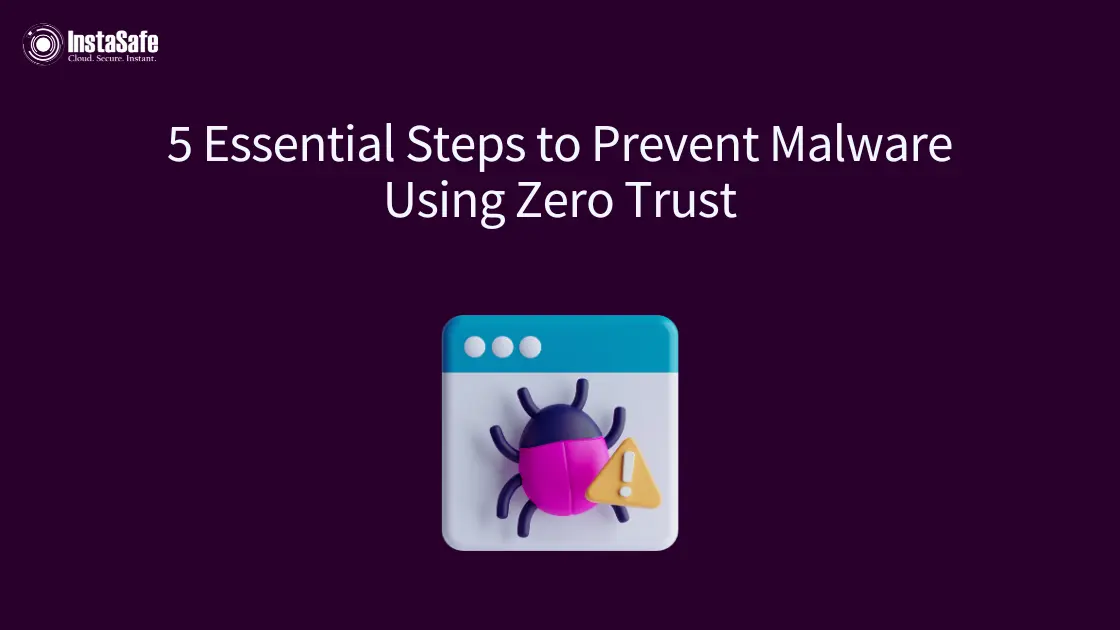5 Essential Steps to Prevent Malware Using Zero Trust

Malware prevention has become a critical challenge for organisations in an increasingly complex digital landscape. As cyber threats evolve, traditional security approaches fall short.
Zero Trust infrastructure prevents malware through verified access, continuous monitoring and strict controls. This strategy offers effective ways to prevent malware by trusting nothing, verifying everything and maintaining vigilance across all network activities.
Essential Ways to Prevent Malware With Zero Trust
Step 1: Define and Protect the Attack Surface
An important part of successfully preventing malware is understanding and reducing the attack surface. Organisations must take a comprehensive approach to identifying and protecting potential vulnerabilities across their digital infrastructure.
This process begins with a thorough inventory of all digital assets, including hardware devices, software applications, cloud services and network endpoints.
The foundation of zero trust methodology lies in the principle of "never trust, always verify." This means that every possible entry point should be seen as a threat, no matter where it is or how safe it seems.
By conducting detailed risk assessments, businesses can map out their entire digital ecosystem, identifying and eliminating unnecessary access points and streamlining system complexity. The goal is to create a robust defence mechanism that anticipates and prevents potential security breaches before they can occur.
Effective attack surface management requires continuous evaluation and adaptation. Organisations must develop a strategic approach through regular vulnerability assessments, prioritising critical assets and implementing granular access controls.
This proactive methodology ensures that every potential point of entry is scrutinised and protected, significantly reducing the risk of malware infiltration.
Step 2: Implement Strong Network Controls and Microsegmentation
Network segmentation becomes an important way to stop the spread of malware and potential security breaches. Companies can make multiple layers of safety that lower the damage of a security event by splitting the network into smaller, separate parts.
This approach goes beyond traditional network security, implementing a more granular and dynamic method of controlling access and protecting sensitive resources.
The implementation of micro segmentation involves creating strict boundaries between different network zones, with access carefully controlled and continuously verified. This means developing virtual local area networks (VLANs) and implementing role-based access controls that ensure users can only access the specific resources required for their work.
The zero trust principle demands verification for all users and devices, regardless of location or history. Advanced network controls combine technological solutions and strategic thinking — the essential malware prevention methods for comprehensive security protection.
This includes using sophisticated firewalls, implementing least privilege access principles and continuously monitoring network traffic for any suspicious activities. The goal is to create an adaptive network environment that can quickly identify, isolate and respond to potential security threats.
Step 3: Deploy Zero Trust Network Access (ZTNA)
Zero Trust Network Access (ZTNA) represents a revolutionary approach to network security that fundamentally changes how organisations manage access to their digital resources. Unlike traditional virtual private networks (VPNs), ZTNA provides a more dynamic and context-aware method of authentication and access control.
This approach verifies user identity, device health and access context for every single request, ensuring a comprehensive security mechanism.
The implementation of ZTNA involves replacing traditional access methods with adaptive, intelligent systems. Further, multi-factor authentication has become a standard practice, with continuous verification replacing one-time login processes.
Each access attempt is checked based on user behaviour, device status and network conditions. With zero trust, even authorised users must prove their legitimacy. The best ways to prevent malware include strict access controls, continuous verification and monitoring for suspicious activity.
Dynamic access permissions are at the heart of ZTNA, allowing organisations to create highly flexible and secure access environments. By implementing real-time risk assessment and contextual access control, businesses can significantly reduce the potential for malware infiltration.
Step 4: Continuous Monitoring and Adaptive Authentication
The foundation of a successful zero-trust security approach is continuous monitoring. Modern organisations must deploy advanced security information and event management (SIEM) systems that leverage AI and ML to detect potential threats in real-time.
These sophisticated monitoring tools track user behaviours, analyse network traffic patterns and generate instant alerts for any suspicious activities. The concept of adaptive authentication goes beyond traditional security measures. It involves creating a dynamic security environment that constantly evaluates risk and adjusts access permissions accordingly.
This means tracking user behaviours, analysing historical access patterns and implementing ways to prevent malware through advanced algorithms to detect potential security breaches instantly. The system assumes that a breach could happen at any moment and remains vigilant.
Automated response protocols are critical in this approach. When a potential threat is detected, the system can immediately take action, such as isolating a specific device, revoking access or triggering additional authentication steps. This approach ensures that potential security incidents are contained before they can cause significant damage.
Step 5: Strengthen Endpoint Security and Patch Management
Endpoints represent critical entry points for malware, making them crucial in zero-trust strategies. Modern protection integrates ways to prevent malware with zero trust through automated patching, anti-malware solutions and device monitoring.
The zero-trust approach to endpoint security treats every device as potentially compromised, requiring continuous verification and validation. This means implementing device health checks, enforcing automatic security updates and using application whitelisting to prevent unauthorised software execution.
Organisations must develop the capability to quickly isolate compromised devices while implementing malware prevention methods through automated patch management, guaranteeing devices receive critical security updates with a single click.
This proactive approach minimises vulnerabilities and reduces the window of opportunity for potential malware attacks. By combining advanced technological solutions with strategic security practices, organisations can create a robust defence mechanism that protects against evolving cyber threats.
Conclusion
Zero Trust represents the best way to prevent malware in a complex digital landscape. By adopting a holistic, multi-layered security approach that combines least privilege access, strong identity verification, network segmentation, continuous monitoring and rigorous endpoint controls, organisations can build robust defences against evolving cyber threats.
We, at Instasafe offer dynamic multi-factor authentication, seamlessly integrating with zero trust frameworks. Our adaptive, context-aware solutions ensure continuous verification, preventing malware and unauthorised access. Elevate your security with Instasafe — where innovation meets robust protection for your digital ecosystem.
Frequently Asked Questions (FAQs)
- What are the pillars of Zero Trust?
The 7 pillars are User, Device, Application & Workload, Network & Environment, Visibility & Analytics and Data, Automation & Orchestration. These form the foundation of zero trust, offering the best way to prevent malware through comprehensive, layered malware prevention methods.
- What are the key principles of the zero-trust security strategy?
Zero trust principles include continuous verification, limiting the "blast radius," and automating context collection. These ensure strict access control, reducing risks and providing effective malware prevention methods to safeguard against breaches.
- What does zero trust prevent?
Zero trust prevents unauthorised access, malware infiltration and lateral movement within networks. Verifying every access attempt minimises risks, making it the best way to prevent malware and secure sensitive data.
- How to implement zero trust security?
Implement zero trust by deploying SASE, microsegmentation, multi-factor authentication (MFA) and least privilege access. These malware prevention methods ensure continuous verification and robust protection, forming the best way to prevent malware in modern networks.
